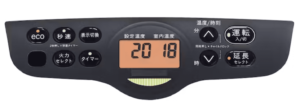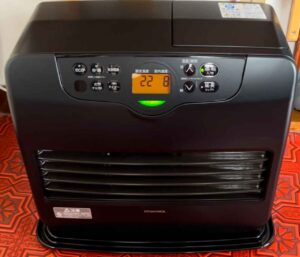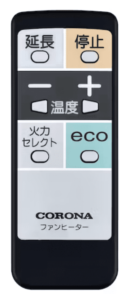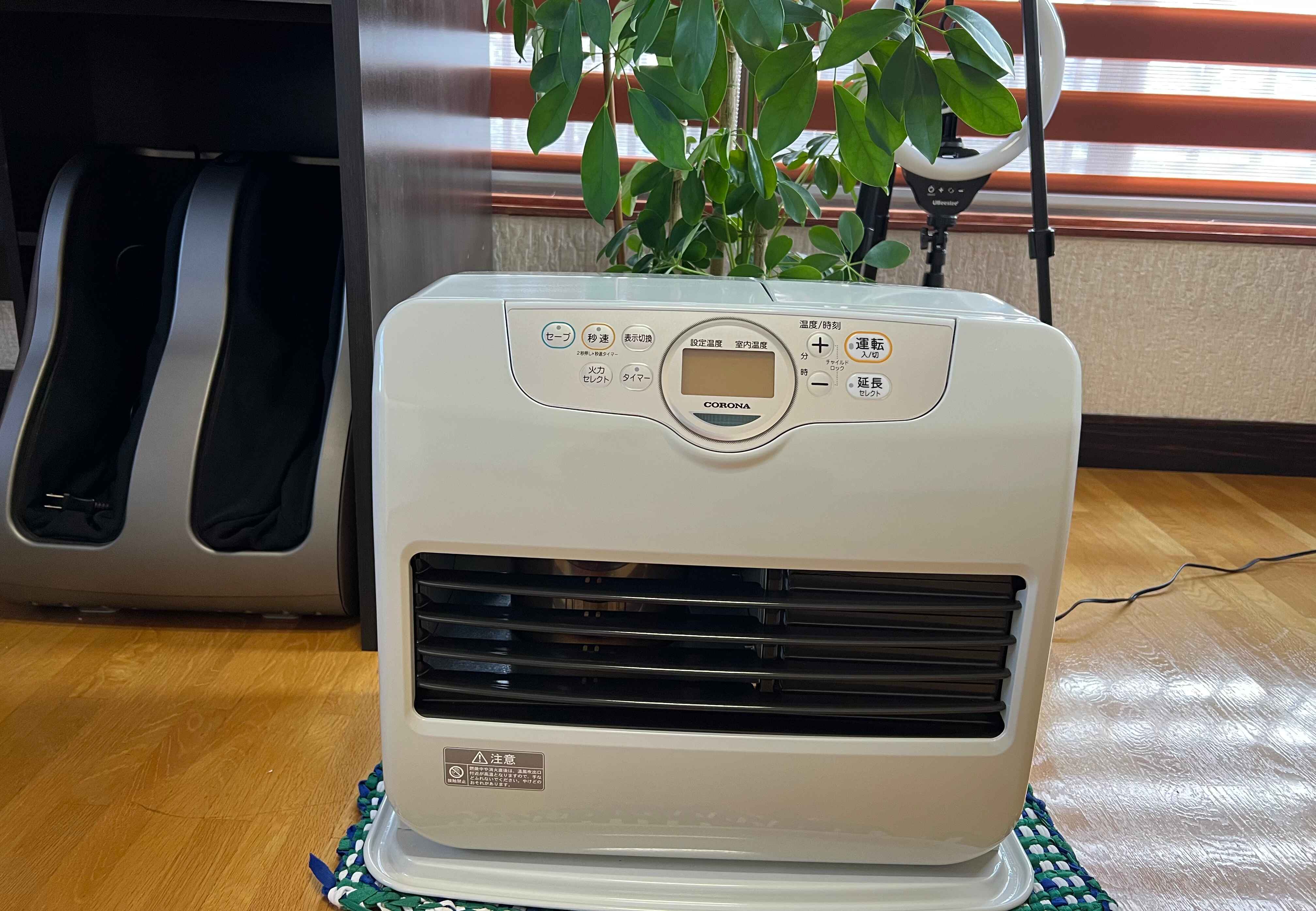Welcome Blessings!
(Tap 🔽 to see more topics!)


Table of Contents
ToggleCorona heater…? Brrr! Winter’s here, and that means one thing; the never-ending quest to stay warm. We’re talking bundling up in layers like a human burrito, sipping hot cocoa with marshmallows until our mugs are empty, and dreaming of springtime. But, sometimes even that’s not enough. Hibernating until the snow melts sounds tempting, but life doesn’t usually work that way. We have places and things to do, and we can’t let a little chill stop us. So, the big question is, how do we make winter less of a frosty challenge and more of a cozy experience? How do we turn our homes into warm and inviting havens?
Now, here in Japan, most places have those air conditioner/heater combos. They’re convenient, but they can also drain the wallet. Running them all winter can bump up your electricity bill. Sometimes, these ACs don’t even do a fantastic job of heating the room. That’s why so many people start looking for other options, something that’s a little more budget-friendly and can keep them toasty warm.
But then you’re faced with another challenge! The sheer number of heaters out there! It’s overwhelming. Some are great… some are not so much. Choosing the wrong one can lead to many problems – sky-high energy bills, a chilly house, or even safety concerns. Nobody wants that! So, we did a lot of research in the world of heaters, searching for the Goldilocks zone. Something that’s both easy on the wallet and better at warming you up than just relying on the AC. And guess what? We found some winners! We’re talking heaters that can make a difference on those cold winter nights.
Living in Japan, winters can be surprisingly chilly, and like most people, we initially relied on our air conditioner to keep things cozy. Big mistake! Our electricity bills were shocking. Seriously, they were through the roof! We quickly figured out why. Air conditioners run entirely on electricity when used for heating. As anyone who’s lived here knows, electricity costs can climb, especially during those peak winter months when you’re cranking the heat constantly.
That’s when we discovered the magic of CORONA kerosene heaters. These things are gems. Unlike air conditioners, CORONA heaters use a combination of kerosene and a little bit of electricity. And that makes a huge difference. Kerosene is readily available and much more affordable than electricity here. The best part is heaters primarily use kerosene for warmth. The small amount of electricity is just for the fan and ignition- it’s minimal. So, you get this powerful, consistent heat that warms the whole room without breaking the bank. It’s a much more comfortable and budget-friendly way to get through the winter!
After switching to CORONA heaters, we immediately noticed the difference. Not only in our monthly utility costs but also in their level of warmth and comfort. Unlike AC heaters, which tend to create dry and inconsistent heating, CORONA heaters maintain a cozy, natural warmth that feels more effective. If you’re tired of battling the cold and want a more efficient way to stay warm, this is where it’s at.
One of the most appealing aspects of kerosene heaters is their portability. If your apartment has an air conditioning unit installed in one central location, it’s often hard to enjoy warmth everywhere you need it. But with a kerosene heater, you can move it from room to room, creating a personalized heating zone wherever you are. Whether you’re spending time in the living room, working in your office, or relaxing in your bedroom, you can take your warmth.
However, there are some important considerations to keep in mind. Not all apartment buildings in Japan allow kerosene heaters due to fire concerns. For example, places like LeoPalace21 prohibit their use for safety reasons. So, before purchasing a CORONA heater, check your building’s policies to ensure you’re not violating any rules. It’s always better to be safe than sorry!
Now that we’ve established its benefits, let’s discuss which model best suits your needs. Each has its features, performance levels, and pros and cons.
So today, we’ll be reviewing the three popular CORONA heaters:
These heaters have one thing in common, they use kerosene as fuel. Kerosene is a type of liquid petroleum that is widely available and affordable in Japan. It is also cleaner and safer than other fuel types like wood or coal. However, their performance, energy efficiency, and suitability differ for different spaces. Now, let’s take a closer look at each of them.
This heater is the most powerful and advanced of the three. Think of this heater as the powerhouse of the lineup. It provides fast, efficient heating for large spaces, ideal for homes with enormous living areas or apartments with poor insulation.


Best for: Those looking for powerful heating in large spaces and willing to invest in efficiency and convenience.

This heater is similar to the previous one but has a different design and no remote control.

Best for: Those who need efficient heating for medium-sized rooms and prefer a balance between power and cost.
This heater is the best choice for those who prioritize cost-efficiency and silence. Unlike the first two, it operates without a fan and uses a wick to generate soft, natural warmth.
This heater is best for small apartments, single rooms, and budget-conscious buyers. If you’re looking for an affordable, efficient, and quiet heater for a small room or apartment, it is the one.
Now that you know the differences between these heaters, how do you compare and contrast them? How do you weigh each heater’s pros and cons and decide which is the best for you? There are many factors to consider, such as the size and layout of your home, your personal preference and comfort level, and your budget. Below are some tips on how to compare and contrast the heaters:
Generally, the larger and colder your space, the higher the heating output and range you need. The Oil Fan Heater FH-GCR5723BY-K Matte Black has the most robust heating output and coverage, like the Oil Fan Heater FH-G5723BY-W Shell White and the Corona Heater RX-22YA(HD).
2. Think about your preference. Consider your heating preferences before buying a heater.
The answers to these questions will help you determine the type and style of heater that suits you best. Generally, oil fan heaters have more features and functions, but they are noisier and produce dry air. On the other hand, oil stoves have fewer features and functions, but they make less noise and dry air.
3. Check your budget.
These questions will help you determine the cost and efficiency of your heater. Generally, the oil fan heaters are more expensive to buy and operate, but they heat up faster and more evenly. On the other hand, the oil stove is cheaper to purchase and use but heats up slower and less evenly.
Picking the right heater can feel like going through a maze. We get it. We’ve been there, staring at rows of heaters, wondering which one will keep us cozy without costing a fortune. It’s easy to get lost in all the specs and jargon. But it doesn’t have to be that complicated.
It is like finding the perfect pair of shoes. You can read all the reviews worldwide, but ultimately, it comes down to how they feel on your feet. The same goes for heaters! The tips and reviews we shared are a great starting point, but your needs and what you like best are key. What’s the size of your space? How warm do you like it? What’s your budget? These are the questions only you can answer.
Our advice? Don’t just take our word for it (or anyone else’s, for that matter!). Get out there and explore! Visit a store if you can – it’s like test-driving a car. See the heaters in person, feel the warmth (if possible), and get a sense of their size and design. If you can’t reach a store, browsing online is the next best thing. Compare prices and features, and read even more reviews. The more info you gather, the better. If a store offers a trial or demo, definitely take advantage! Sometimes, a heater looks excellent on paper, but it’s not until you experience it in your own space that you truly know if it’s the right fit.
If you’re looking for a heater that’s efficient, affordable, and dependable this winter, CORONA heaters are worth checking out. They’re known for keeping spaces warm and toasty without emptying your wallet. They’re a popular choice in Japan for a reason! One quick thing to keep in mind, especially if you live in an apartment in Japan. It’s a good idea to double-check your building’s rules about kerosene heaters. Some places don’t allow them, so it’s always better to be safe than sorry.
So, what are your thoughts? Have you tried a CORONA heater? Or do you have questions about the ones we mentioned? Share your experiences and questions in the comments below. And thanks for hanging out with us for this review! Voila! Stay warm and cozy this winter! Until next time!
Disclosure: Shopping through our Amazon links costs you NO EXTRA FEES! Please note that we do not process payments or confirm orders. If you click the link or button, it directs you to Amazon’s website or app, where Amazon handles all transactions. This article actively participates in the Amazon Associates Program, an affiliate initiative designed to enable websites to earn referral fees by advertising and linking to Amazon.co.jp. We only endorse the products and services we have tested and strongly believe in; hence, our recommendations are rooted in this unwavering trust.
Arlene Tangcangco, Ph.D. candidate (タンカンコ道地ア-リ-ン) also known as Teacher AL, is a learner and teacher at heart. Driven by curiosity, she has explored various fields since she was 17. She was a working student who held multiple jobs as a Tutor, Customer Service, and Sales Associate while studying full-time. After graduation, she worked as a Junior Radio Reporter, Team Leader, HR Recruitment and Training Officer, College Instructor, and Permanent Public Secondary School Teacher.
She has also jetted off to Japan to teach conversational, business, and academic English to various learners while furthering her education. AL's motto is "Learn to teach, and teach to learn." She believes education is a lifelong process that enriches one's mind, heart, and soul.
We use cookies and similar technologies to improve your experience by processing data like browsing behavior and device info. If you don’t consent, some features may not work properly.
